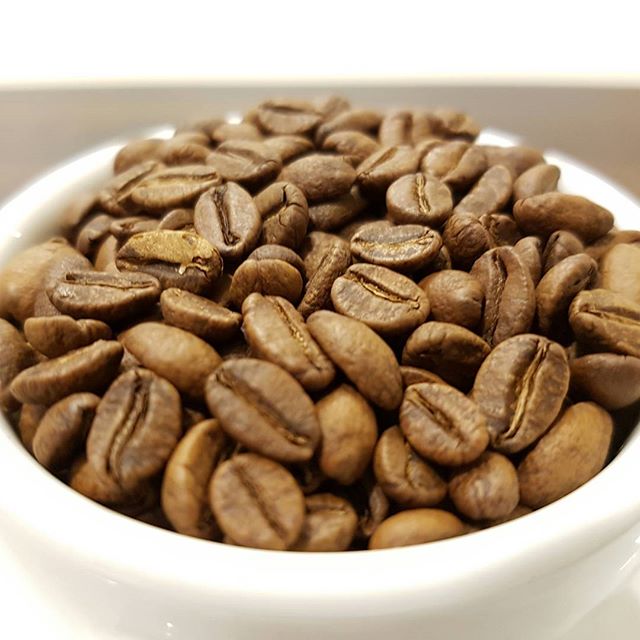Natural decaf beans-pointed bourbon story what other varieties of decaf are there?

Professional coffee knowledge exchange more coffee bean information please follow the coffee workshop (Wechat official account cafe_style)
The origin and development of decaf: why are all Swiss decaf sold?
Sharp Bourbon / Wild Natural semi-decaf Bourbon Pointu
Coffee Bean King: pointed Bourbon Bourbon Pointu, one of the rare boutique coffee beans in the world, is small and expensive, but its delicate texture is highly respected by coffee lovers. Is the French literary dignitaries' favorite'a thousand cups can sleep 'delicious coffee, in Japan's UCC exclusive sale of pointed bourbon, 100g asking price as close to 8000 yen, several times as much as Blue Mountain!
Unlike the general round coffee beans, the long rice-shaped beans were discovered by the French in Bourbon Island in 1810. They were drought-resistant mutants of bourbon, named because of their special bean shape, while pointed bourbon was a natural species, not as carefully fertilized and cared for as greenhouse cultivation, so coffee beans were hard, easy to get disease, low yield and high loss rate. But the advantage is that the taste spectrum is elegant, rich in fruit and sour flavor, and it is also a rare wild natural semi-low-caffeine coffee, which is suitable for drinking alone or before eating, because the taste is very light, and only at this time, the tongue can be chewed sensitively and savor its fine layering sensation. The flavor is rich, fresh and natural, with the smell of sunshine and wild flowers.
Arabica and Robusta
Coffee is mainly divided into three varieties: Arabica, Robusta and Liberica. Lieberika is less common and will not be introduced here.
Arabica has lower caffeine content and better taste than Robusta, making it a favorite of people all over the world.
1. The level of aroma is rich and changeable.
2. The taste is smooth.
3. The caffeine content is half of that of Robusta.
The two elders of Arabica beans are "Tibica" Typica and "bourbon" Bourbon.
Tibica, the name sounds majestic, but in fact it is not so strong. It has weak physique, poor disease resistance, easy to catch rust leaf disease and less fruit yield. It is one of the oldest native varieties in Ethiopia, and many Arabica are derived from Tibica! Tiebika top leaf is bronzed is one of the characteristics, the bean grain is larger, pointed oval or thin. Mantenin, Blue Mountain, Elephant Bean, Kona, Yunnan Xiaoyuan Dou, and so on, are all derived varieties of Tibika.
Bourbon is an ancient and excellent variety juxtaposed with Tibika, and some botanists believe that bourbon may be an early variety of Tibika after it was transplanted to Yemen. Bourbon beans are slightly smaller than Tibica, but the yield of late ripening is 30% higher than that of Tibica. It is suitable for growing above 1200 meters above sea level, and its flavor is obviously more prominent than those below 1000 meters, but bourbon has a disadvantage that it will rest for a year as a result. Bourbon is full of vitality, and its resistance to rust leaf disease is better than Tibica, but its flavor is as good as it, or even better.
In 1810, some of the round beans in Bourbon Island mutated into pointed beans, which is known as the "pointed bourbon". It is a pity that the caffeine content is only half, but it is as sick as Tibica because of the scarcity of the variety.
Artificial decontamination of low caffeine coffee │ & natural low cause
Decaf coffee, as its name implies, is coffee that contains only trace amounts of caffeine. Coffee contains many ingredients and substances, among which caffeine has an obvious effect on the human body. For many people who are addicted to coffee, but their physical condition does not allow caffeine, decaffeinated coffee is their "savior", but everything has its pros and cons. Coffee that has been artificially decaffeinated is almost always denounced as coffee water or smells bad like chemicals.
In general, the moisture content of raw coffee beans is 12%, and the caffeine content is 1. 5%. According to internationally recognized standards, the weight of caffeine in raw coffee beans treated with low caffeine shall not exceed 0.1% of raw beans, and powdered decaf coffee shall not exceed 0.3% by weight. In other words, caffeine should not exceed 5 mg in a cup of decaf (usually 170 grams).
For cost considerations, most of the low-caffeine coffees on the market are removed by manual methods, and most of them use the following four types:
Ethyl acetate treatment
Dichloromethane treatment
Swiss water treatment method
Supercritical carbon dioxide treatment
The first two are most commonly used in decaf places, where ethyl acetate or dichloromethane is used as a solvent to remove coffee, where most of the coffee flavor is lost, at a relatively low cost, but the taste is really poor, or there are some residues, but experts say it is almost harmless to the human body after baking. Although the latter 3 and 4 can retain most of the flavor, but because the cost is more than 3 times that of the first two, almost all of them are not used for profit, and it is extremely difficult for consumers to drink the low-caffeine coffee made by these two treatments.
Because of manual treatment, many people think that commercial decaf coffee has a poor flavor. The caffeine content of Arabica accounts for about 1.5% of the bean seed 1Murray. The standard of low-caffeine coffee set by similar FDA institutions in Europe and the United States is basically 0.03%. At present, the content of the three natural low-caffeine coffees sold in Europe, the United States and Japan is basically 0.4%, 0.9%, which can be counted as half-low at most.
two。 Natural low-cause variety
Two companies have to say about the discovery and cultivation of natural decaf coffee. Illy in Italy and ucc in Japan. The subjects they studied were beans called sharp-bodied bourbon.
Starting in 1989, illy failed experiments in Brazil and then transplanted to El Salvador as a surprise. Since 2008, Idillyum's natural semi-decaf espresso capsules have been sold. The yield of raw beans is not high, and the formula of Idillyum contains other Arabica beans, that is, impure pointed bourbon.
As early as the 1970s, when Yoshihiro Kawashima, an expert at ucc coffee in Uashima, Japan, was studying coffee cultivation in El Salvador, he heard an old farmer mention that "ancient, low-caffeine coffee trees may still live on French bourbon island." Later, he went to Africa to look for "ancient and decaffeinated coffee trees." And came back to nothing. A phone call in 2001 brought good news. Sure enough, it is the "bourbon piontu" that has disappeared for half a century. The plan to restore the pointed body bourbon in its earliest birthplace shocked the world. The low production of 700kg in 2006 led to the high price of 7350 yen per 100g for ucc in April 2007, which was five times more expensive than Blue Mountain that year.
In the world's major roasters looking for the cultivation of natural decaf coffee craze, a country can not be ignored. The development of natural low-caffeine coffee is actually a process of discovering and modifying coffee tree genes. As a result, Ethiopia, the birthplace of Arabica and a treasure trove of Arabica genes, has not yet joined the war. In 2008, officials from Ethiopia's Ministry of Agriculture announced that natural low-cause varieties had been found. And the matter is wrong, I do not know whether it is true or not.
In the past, most of the natural low-caffeine varieties found by scientists came from Ethiopia, Mozambique or Madagascar and the Scarlin Islands. In 2008, a new breed of Cameroon coffee was found, "Charyeriana Coffee". It is self-pollinated like Arabica and the seeds are caffeine-free.
How to cultivate new coffee varieties with low cause, delicious taste and high yield has become a prominent study in the coffee planting industry in recent years.
.
Important Notice :
前街咖啡 FrontStreet Coffee has moved to new addredd:
FrontStreet Coffee Address: 315,Donghua East Road,GuangZhou
Tel:020 38364473
- Prev

The difference between decaf beans and decaf beans is Starbucks decaf beans?
Professional coffee knowledge exchange more coffee bean information please follow the origin and development of decaf coffee in coffee workshop (Wechat official account cafe_style): why are all Swiss water treatment decaf coffee sold? Once upon a time, a group of French took Yemeni coffee beans to an island in the Indian Ocean because the climate and soil on the island were very different from those of Yemen.
- Next

How does Starbucks decaffeinated coffee taste? Starbucks decaffeinated coffee method
Professional coffee knowledge exchange more coffee bean information please follow the origin and development of decaf coffee in coffee workshop (Wechat official account cafe_style): why are all Swiss water treatment decaf coffee sold? Once upon a time, the author can drink four or five cups of noodles a day without changing color, to more than one cup is prone to palpitations, have done Holter EKG and did not find a special reason, often smell
Related
- Beginners will see the "Coffee pull flower" guide!
- What is the difference between ice blog purified milk and ordinary milk coffee?
- Why is the Philippines the largest producer of crops in Liberia?
- For coffee extraction, should the fine powder be retained?
- How does extracted espresso fill pressed powder? How much strength does it take to press the powder?
- How to make jasmine cold extract coffee? Is the jasmine + latte good?
- Will this little toy really make the coffee taste better? How does Lily Drip affect coffee extraction?
- Will the action of slapping the filter cup also affect coffee extraction?
- What's the difference between powder-to-water ratio and powder-to-liquid ratio?
- What is the Ethiopian local species? What does it have to do with Heirloom native species?

